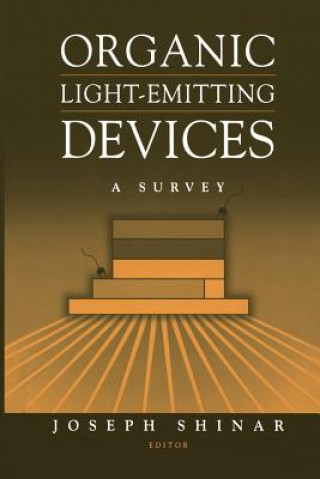
Kód: 01421687
Organic Light-Emitting Devices
Autor Joseph Shinar
Although it has long been possible to make organic materials emit light, it has only recently become possible to do so at the level and with the efficiency and control necessary to make the materials a useful basis for illuminatio ... celý popis
- Jazyk:
 Angličtina
Angličtina - Väzba: Brožovaná
- Počet strán: 309
Nakladateľ: Springer-Verlag New York Inc., 2011
- Viac informácií o knihe

Mohlo by sa vám tiež páčiť
-

Saving Biological Diversity
200.28 € -

Taxation and Public Finance in Transition and Developing Economies
274.65 € -

Statistics in Criminal Justice
113.53 € -

Piezoelectric and Acoustic Materials for Transducer Applications
212.66 € -

Linking Trade and Security
138.28 € -

Optical Solitons
212.66 € -

GESCHIEDENIS DER FRANSCHE PROTESTANTSCHE
25.96 € -

Derek Jarman's Medieval Modern
30.53 € -38 % -

Nostalgic Large Print Word Search: The 1960s
18.15 € -

Office Holders In The Duchy Of Lancaster
27.18 € -

Selected Poems and Prose of Paul Celan
30.43 € -
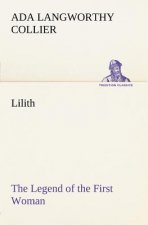
Lilith The Legend of the First Woman
13.99 € -5 % -

In the Fog
25.36 € -

Natural Product Synthesis II
410.92 €
Darujte túto knihu ešte dnes
- Objednajte knihu a vyberte Zaslať ako darček.
- Obratom obdržíte darovací poukaz na knihu, ktorý môžete ihneď odovzdať obdarovanému.
- Knihu zašleme na adresu obdarovaného, o nič sa nestaráte.
Viac informácií o knihe Organic Light-Emitting Devices
Nákupom získate 350 bodov
 Anotácia knihy
Anotácia knihy
Although it has long been possible to make organic materials emit light, it has only recently become possible to do so at the level and with the efficiency and control necessary to make the materials a useful basis for illumination or displays. The early electroluminescent devices provided reasonably bright light, but required high operating voltages, produced only a narrow range of colors, and had severely limited lifetimes. Recent developments, however, make it possible to manufacture organic light-emitting devices that are thin, bright, efficient, and stable and that produce a broad range of colors.§This book surveys the current status of the field. It begins with an overview of the physics and chemistry of organic light emitting devices by J. Shinar and V. Savvateev. Subsequenbt chapters discuss the design of molecular materials for high performance devices (C. Adachi and T. Tsutsui) and chemical degradation and physical aging (K. Higginson, D. L. Thomsen, B. Yang, and F. Papadimitrakopoulos). A. Dodabalapur describes microcavity OLEDs, and Y. Shi, J. Liu, and Y. Yang discuss polymer morphology and device performance. Various aspects of devices based on polyparaphenylene vinylenes are discussed in chapters by N.C. Greenham and R.H. Friend and by H. Chayet, V. Savvateeyv, D. Davidov and R. Neumann. Chapters by S. Tasch, W. Graupner, and G. Leising and by Y. Z. Wang, D. Gebler, and A. J. Epstein describe OLEDs based on poly(paraphenylene) and poly(pyridine), respectively. The book concludes with a chapter on polyfluorene-based devices, which show great promise for producing light in all colors from blue to red.Although it has long been possible to make organic materials emit light, it has only recently become possible to do so at the level and with the efficiency and control necessary to make the materials a useful basis for illumination in any but the most specialized uses. This book surveys the current status of the field.Although it has long been possible to make organic materials emit light, it has only recently become possible to do so at the level and with the efficiency and control necessary to make the materials a useful basis for illumination in any but the most specialized uses. The early electroluminescent panels and cells provided reasonably bright light, but required high operating voltages, produced only a narrow range of colors, and had severely limited lifetimes. Recent developments, however, make it possible to manufacture organic light-emitting devices that are thin, bright, efficient, and stable and that produce a broad range of colors.§This book surveys the current status of the field. It begins with an overview of the physics and chemistry of organic light emitting devices by J. Shinar and V. Savvateev. It then turns to the design of molecular materials for high performance devices (C. Adachi and T. Tsutsui) and a discussion of chemical degradation and physical aging (K. Higginson, D.L. Thomsen, B. Yang, and F. Papadimitrakopoulos). A. Dodabalanpur describes microcavity LEDs, and Y. Shi, J. Liu, and Y. Yang discuss polymer morphology and device performance. Various aspects of devices based on polyparaphenylenes are discussed in chapters by N.C. Greenham and R.H. Friend; by Chayet, Savvateeyv, Davidoff and Neumann; and by S. Tasch, W. Graupner, and G. Leising. The book concludes with a discussion of devices based on pyridine-containing conjugated polymers by Y.Z. Wang, D. Gebler, and A.J. Epstein
 Parametre knihy
Parametre knihy
Zaradenie knihy Knihy po anglicky Technology, engineering, agriculture Electronics & communications engineering Electronics engineering
140.21 €
- Celý názov: Organic Light-Emitting Devices
- Podnázov: A Survey
- Autor: Joseph Shinar
- Jazyk:
 Angličtina
Angličtina - Väzba: Brožovaná
- Počet strán: 309
- EAN: 9781441929600
- ISBN: 1441929606
- ID: 01421687
- Nakladateľ: Springer-Verlag New York Inc.
- Hmotnosť: 499 g
- Rozmery: 235 × 155 × 23 mm
- Dátum vydania: 09. October 2011
Obľúbené z iného súdka
-
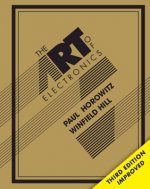
The Art of Electronics
101.66 € -

Practical Electronics for Inventors
40.07 € -10 % -
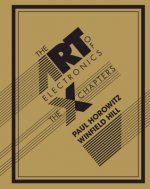
The Art of Electronics: The x Chapters
65.13 € -

How to Diagnose and Fix Everything Electronic, Second Edition
24.14 € -16 % -
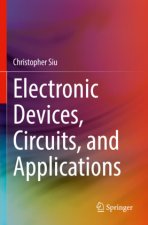
Electronic Devices, Circuits, and Applications
72.74 € -
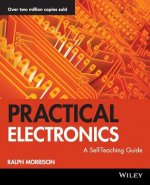
Practical Electronics - A Self-Teaching Guide
23.94 € -4 % -
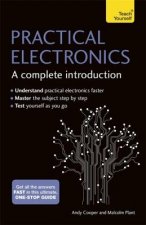
Practical Electronics: A Complete Introduction
18.66 € -19 % -

Lego Power Functions Idea Book, Volume 1
20.38 € -21 % -

Design of Analog CMOS Integrated Circuits
76.70 € -

Automotive Oscilloscopes
55.29 € -2 % -

Signals & Systems For Dummies
24.95 € -3 % -

LOGO! 8 - A Practical Introduction, with Circuit Solutions and Example Programs
29.82 € -6 % -

LEGO MINDSTORMS EV3 Idea Book
24.85 € -4 % -

Encyclopedia of Electronic Components Volume 2
25.05 € -18 % -

Probabilistic Robotics
130.37 € -2 % -

Motors for Makers
31.24 € -15 % -

Schaum's Outline of Electronic Devices and Circuits, Second Edition
25.46 € -15 % -

High-Frequency Magnetic Components 2e
198.86 € -

Theory of Robot Control
175.52 € -

Introduction to Optimal Control Theory
101.15 € -

Art of Hardware Architecture
140.21 € -

FPGA Design
130.07 € -

Computer Arithmetic
120.53 € -

Schaum's Outline of Digital Principles
35.81 € -

Designing with Xilinx (R) FPGAs
154.62 € -

The LEGO Power Functions Idea Book, Vol. 2
20.38 € -20 % -

Complete Electronics Self-Teaching Guide with Projects
30.02 € -21 % -

Audiophile Vacuum Tube Amplifiers - Design, Construction, Testing, Repairing & Upgrading, Volume 1
72.33 € -

Audiophile Vacuum Tube Amplifiers - Design, Construction, Testing, Repairing & Upgrading, Volume 2
72.33 € -

Audiophile Vacuum Tube Amplifiers Volume 3
72.33 € -

Lego Technic Idea Book: Simple Machines
21.30 € -

Arduino Cookbook
47.78 € -15 % -

How to Diagnose and Repair Automotive Electrical Systems
27.89 € -10 % -

Electronics For Dummies, UK Edition
19.88 € -29 % -
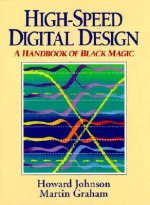
High Speed Digital Design
98.82 € -

Automobile Electrical and Electronic Systems
69.59 € -

Scary Smart
24.14 € -

3,000 Solved Problems in Electrical Circuits
42.20 € -14 % -

Robotics, Vision and Control
71.01 € -8 % -

Lego Technic Idea Book: Fantastic Contraptions
17.85 € -16 % -

Lego Technic Idea Book: Wheeled Wonders
18.05 € -15 % -

Cybernetics
16.02 € -
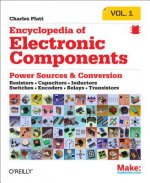
Encyclopedia of Electronic Components
20.99 € -19 % -

PLC Controls with Structured Text (ST)
31.75 € -2 % -

Make: More Electronics
29.01 € -18 % -

Fundamentals of Power Electronics
110.99 € -
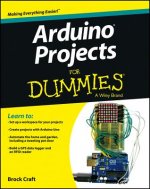
Arduino Projects For Dummies
22.11 € -25 % -

C Programming on Raspberry Pi
34.89 € -10 % -

Manga Guide To Microprocessors
22.51 € -14 %
Osobný odber Bratislava a 2642 dalších
Copyright ©2008-24 najlacnejsie-knihy.sk Všetky práva vyhradenéSúkromieCookies



 21 miliónov titulov
21 miliónov titulov Vrátenie do mesiaca
Vrátenie do mesiaca 02/210 210 99 (8-15.30h)
02/210 210 99 (8-15.30h)